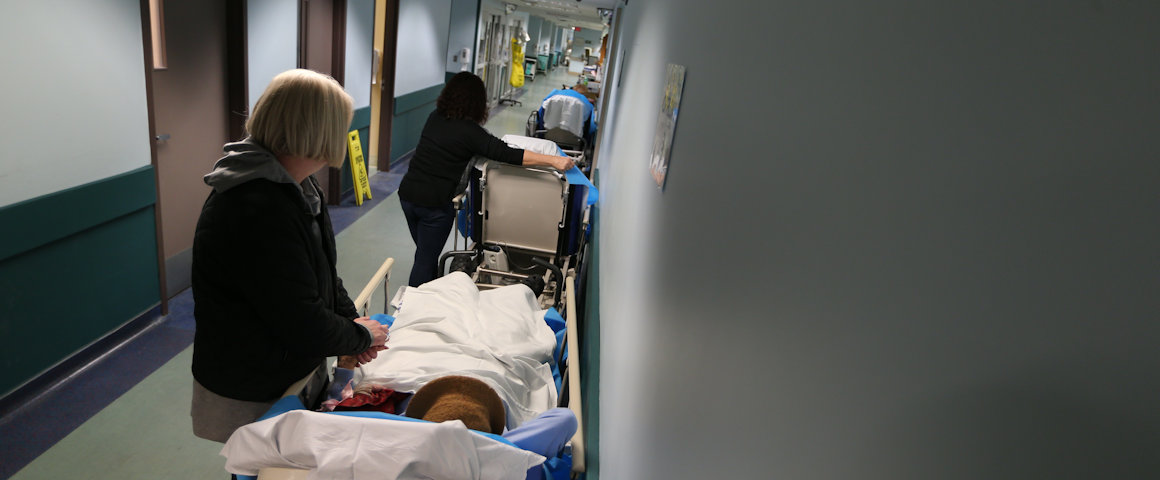Ontario will likely be one of the provinces hit the hardest by the pandemic. The province has the most confirmed cases of COVID-19, while it is last in the country when it comes to per capita expenditures on hospitals. Almost three decades of the corporate austerity agenda has decimated healthcare and opened up the sector to privatization.
Canada’s most populous province has been leading the neoliberal austerity charge for several years with the lowest per capita spending on social programs, pushing down social spending in the rest of Canada in a race to the bottom. From 1995 to 2003, the Conservative government of Mike Harris drastically sped up the introduction of neoliberal reforms in the province, with a slash and burn approach. Between 2003 and 2018, the Liberal governments of Dalton McGuinty and Kathleen Wynne did not reverse most of the cuts and continued a slow boil austerity program that continued the piecemeal privatization of the health sector. New P3 hospitals, private clinics and health fees were introduced. Doug Ford’s Conservatives were elected in 2018 with a right-wing populist anti-Liberal message and then proceeded to introduce massive cuts and restructuring to healthcare, which have escalated significantly in the last year.
The overall results, even before the pandemic, are dramatic. Ontario has 1.4 acute care hospital beds per thousand inhabitants with Canada averaging 2 per thousand. This can be compared to Germany’s 6 hospital beds per thousand. Even the United States has more beds at 2.4 per thousand.
The Ford government’s massive cuts included healthcare. The current 18.3-hour hospital wait time is up sharply from 14.4 hours when the Conservatives were elected – a 27% increase in just 18 months.
For many communities, the situation was critical before the pandemic. In Brampton, the government recently voted against funding a second hospital, while the current hospital was operating at more than 100% capacity throughout the first half of 2019. Thousands of patients have been stuck in hallways for more than 72 hours waiting for a bed. In early 2020, Brampton city council declared a health care emergency. Brampton is not alone; forty other hospitals in the province averaged 100 per cent capacity during the same period in 2019.
Neoliberal attacks on public healthcare in Ontario have put the province in a situation where many were suffering and dying needlessly long before the pandemic hit. These deaths are now set to rise dramatically.
Doug Ford was elected on the promise of “ending hallway medicine,” which was already common under the Liberals as many patients had no access to hospital beds. However, his government seems to have followed the usual Conservative playbook of exacerbating the crisis to move towards privatization. Ontarians will remember that the Harris government’s education minister John Snobelen was caught on tape saying that he needed to create a “useful crisis” and “bankrupt” the public education system in order to privatize it.
The infrastructure for privatization was put in place in 2019 with the Hospital Restructuring Act, which sets up a centralized Super Agency to replace the fourteen Local Health Integration Networks (LHINs), Cancer Care Ontario, Health Quality Ontario, the Trillium Organ donation system and many other health care services in the province. The legislation gives the Minister of Health enormous powers to order mergers and transfer and close services. It is the most severe restructuring of health services in the recent history of Ontario and is designed to give the Super Agency the power to privatize. The new agency includes members like Charles Lammam from the free market extremist Fraser Institute, Shelley Jamieson from the multi-national long-term care corporation Extendicare, and Elsye Allan from the corporate think tank C.D. Howe Institute.
Further privatization of health care has already started with the government’s new home care bill, by removing home care from public oversight and contracting out to provider companies.
However, the Ford government was probably not expecting the pandemic to highlight their dirty work and they have been forced to put some of their cuts and restructuring on hold due to the emergency. On March 12, the government announced they would put their cuts to public health units on hiatus for this year. They had planned to eliminate 25 out of 35 local public health units, putting more pressure on municipalities to continue to maintain services provided by the health units like vaccination programs, infectious disease outbreak investigations and restaurant inspection.
Even in the face of COVID-19, the government has indicated that further cuts to healthcare are still coming. As recently as the end of February, Health Minister Christine Elliot said, “We want our public health units to be doing their work in their individual areas, but that doesn’t mean things are coming to a stop. They will be started again, as soon as the immediate priority has passed.” After halting the restructuring to public health units in March, Ford said “we’re taking it year by year,” when asked why he was not permanently stopping the cuts.
The pandemic threatens everyone’s health, around the world and across Canada. What is required is a massive, coordinated, response which provides the economic, health and social supports necessary to overcome the crisis. It is abundantly clear that the purposefully underfunded healthcare system in Ontario needs to be immediately strengthened and that profits in healthcare only come at the expense of immense human suffering.
[hr gap=”10”]
Support socialist media!
If you found this article useful, please consider donating to People’s Voice.
We are 100% reader-supported, with no corporate or government funding.




